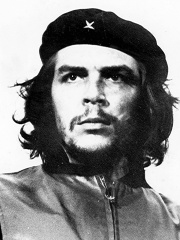
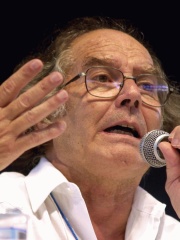
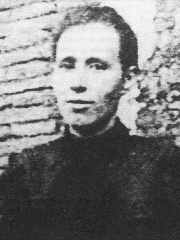
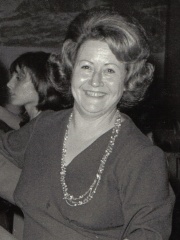
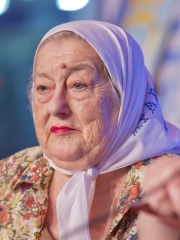
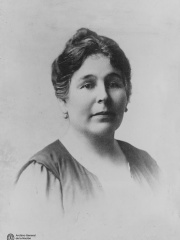

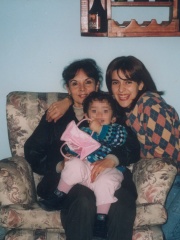
The Most Famous
SOCIAL ACTIVISTS from Argentina
This page contains a list of the greatest Argentinean Social Activists. The pantheon dataset contains 840 Social Activists, 11 of which were born in Argentina. This makes Argentina the birth place of the 20th most number of Social Activists behind Egypt, and Sweden.
Top 10
The following people are considered by Pantheon to be the top 10 most legendary Argentinean Social Activists of all time. This list of famous Argentinean Social Activists is sorted by HPI (Historical Popularity Index), a metric that aggregates information on a biography's online popularity. Visit the rankings page to view the entire list of Argentinean Social Activists.

1. Che Guevara (1928 - 1967)
With an HPI of 93.09, Che Guevara is the most famous Argentinean Social Activist. His biography has been translated into 169 different languages on wikipedia.
Ernesto "Che" Guevara (14 May 1928 – 9 October 1967) was an Argentine Marxist revolutionary, physician, author, guerrilla leader, diplomat, politician and military theorist. A major figure of the Cuban Revolution, his stylized visage has become a countercultural symbol of rebellion and global insignia in popular culture. As a young medical student, Guevara travelled throughout South America and was appalled by the poverty, hunger, and disease he witnessed. His burgeoning desire to help overturn what he saw as the capitalist exploitation of Latin America by the United States prompted his involvement in Guatemala's social reforms under President Jacobo Árbenz, whose eventual CIA-assisted overthrow at the behest of the United Fruit Company solidified Guevara's political ideology. Later in Mexico City, Guevara met Raúl and Fidel Castro, joined their 26th of July Movement, and sailed to Cuba aboard the yacht Granma with the intention of overthrowing US-backed dictator Fulgencio Batista. Guevara soon rose to prominence among the insurgents, was promoted to second-in-command, and played a pivotal role in the two-year guerrilla campaign which deposed the Batista regime. After the Cuban Revolution, Guevara played key roles in the new government. These included reviewing the appeals and death sentences for those convicted as war criminals during the revolutionary tribunals, instituting agrarian land reform as minister of industries, helping spearhead a successful nationwide literacy campaign, serving as both president of the National Bank and instructional director for Cuba's armed forces, and traversing the globe as a diplomat on behalf of Cuban socialism. Such positions also allowed him to play a central role in training the militia forces who repelled the Bay of Pigs Invasion, and bringing Soviet nuclear-armed ballistic missiles to Cuba, a decision which ultimately precipitated the 1962 Cuban Missile Crisis. Additionally, Guevara was a prolific writer and diarist, composing a seminal guerrilla warfare manual, along with a best-selling memoir about his youthful continental motorcycle journey. His experiences and studying of Marxism–Leninism led him to posit that the Third World's underdevelopment and dependence was an intrinsic result of imperialism, neocolonialism, and monopoly capitalism, with the only remedies being proletarian internationalism and world revolution. Guevara left Cuba in 1965 to foment continental revolutions across both Africa and South America, first unsuccessfully in Congo-Kinshasa and later in Bolivia, where he was captured by CIA-assisted Bolivian forces and summarily executed. Guevara remains both a revered and reviled historical figure, polarized in the collective imagination in a multitude of biographies, memoirs, essays, documentaries, songs, and films. As a result of his perceived martyrdom, poetic invocations for class struggle, and desire to create the consciousness of a "new man" driven by moral rather than material incentives, Guevara has evolved into a quintessential icon of various leftist movements. In contrast, his critics on the political right accuse him of promoting authoritarianism and endorsing violence against his political opponents. Despite disagreements on his legacy, Time named him one of the 100 most influential people of the 20th century, while an Alberto Korda photograph of him, titled Guerrillero Heroico, was cited by the Maryland Institute College of Art as "the most famous photograph in the world".

2. Adolfo Pérez Esquivel (b. 1931)
With an HPI of 71.01, Adolfo Pérez Esquivel is the 2nd most famous Argentinean Social Activist. His biography has been translated into 53 different languages.
Adolfo Pérez Esquivel (born 26 November 1931) is an Argentine activist, community organizer, painter, writer and sculptor. He was the recipient of the 1980 Nobel Peace Prize for his opposition to Argentina's last civil-military dictatorship (1976–1983), during which he was detained, tortured, and held without trial for 14 months. He also received, among other distinctions, the Pacem in Terris Award.

3. Virginia Bolten (1876 - 1960)
With an HPI of 58.42, Virginia Bolten is the 3rd most famous Argentinean Social Activist. Her biography has been translated into 25 different languages.
Virginia Bolten (1870–1960) was an Argentine journalist and anarchist feminist activist. An anarchist agitator from an early age, she became a leading figure among the working women of Rosario, organising for the Argentine Regional Workers' Federation (FORA) and leading the first women's strike in the country's history. After being recruited into the anarchist movement in Buenos Aires by the Italian anarchist Pietro Gori, she joined some of the country's first anarchist women's organisations and established one of the world's first anarchist feminist periodicals: La Voz de la Mujer. After years of agitation in Argentina, under the 1902 Law of Residence, she was deported to Uruguay. There she continued her feminist activism, establishing the periodical La Nueva Senda and the radical feminist association Emancipación. Following sustained conflict with socialist feminists, the anarchist feminist movement in Uruguay fell into obscurity. Bolten lived the rest of her life in Montevideo, occasionally speaking at demonstrations, until her death in 1960.

4. Azucena Villaflor (1924 - 1977)
With an HPI of 58.40, Azucena Villaflor is the 4th most famous Argentinean Social Activist. Her biography has been translated into 19 different languages.
Azucena Villaflor (7 April 1924 – 10 December 1977) was an Argentine activist and one of the founders of the Mothers of the Plaza de Mayo, a human rights organisation which looks for the victims of enforced disappearances during Argentina's Dirty War.
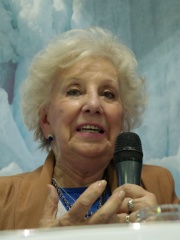
5. Estela de Carlotto (b. 1930)
With an HPI of 55.61, Estela de Carlotto is the 5th most famous Argentinean Social Activist. Her biography has been translated into 24 different languages.
Enriqueta Estela Barnes de Carlotto (born 22 October 1930) is an Argentine human rights activist and president of the association of Grandmothers of the Plaza de Mayo. One of her daughters, Laura Estela Carlotto, was kidnapped and missing while pregnant in Buenos Aires, in late 1977. Through stories, she could ascertain that her daughter had given birth to a boy, and that her grandson was appropriated and his identity changed. She searched for him for nearly 36 years, until, on 5 August 2014, after a DNA check voluntarily made by the person concerned, her grandson was identified, and became the 114th in the list of recovered grandchildren. Carlotto has received several awards for her work with Grandmothers of the Plaza de Mayo (Abuelas de Plaza de Mayo), including the United Nations Prize in the Field of Human Rights and Félix Houphouët-Boigny Peace Prize, awarded by the Unesco. In 2015, she was listed as one of BBC's 100 Women.

6. Hebe de Bonafini (1928 - 2022)
With an HPI of 54.58, Hebe de Bonafini is the 6th most famous Argentinean Social Activist. Her biography has been translated into 16 different languages.
Hebe María Pastor de Bonafini (4 December 1928 – 20 November 2022) was an Argentine activist who was one of the founders of the Association of the Mothers of the Plaza de Mayo, an organization of Argentine mothers whose children disappeared during the National Reorganization Process military dictatorship.

7. Elvira Rawson de Dellepiane (1867 - 1954)
With an HPI of 53.64, Elvira Rawson de Dellepiane is the 7th most famous Argentinean Social Activist. Her biography has been translated into 19 different languages.
Dr. Elvira Rawson de Dellepiane (née Elvira Rawson; April 19, 1867 – June 4, 1954) was an Argentine militant suffragist and the second woman to receive a medical degree in Argentina. She was an activist for women's and children's rights and was known as "the mother of women's rights in Argentina".

8. Maria Verónica Reina (1964 - 2017)
With an HPI of 51.28, Maria Verónica Reina is the 8th most famous Argentinean Social Activist. Her biography has been translated into 22 different languages.
Maria Verónica Reina (15 June 1964 – 27 October 2017) was an Argentine educational psychologist and activist who campaigned internationally for disability rights. Representing the International Disability and Development Consortium, she was a leading contributor to negotiations on the United Nations Convention on the Rights of Persons with Disabilities.

9. Susana Trimarco (b. 1954)
With an HPI of 48.13, Susana Trimarco is the 9th most famous Argentinean Social Activist. Her biography has been translated into 15 different languages.
Sara Susana del Valle Trimarco de Veron, or Susana Trimarco (born 1954), is an Argentinian human rights activist, whose efforts to combat human trafficking and corruption have been recognized internationally. After the 2002 disappearance of her daughter, who is believed to have been kidnapped by a human trafficking network, she spent years searching for her, and started a foundation to support victims of sex trafficking. Her lobbying is credited with bringing corruption and government impunity to the fore in Argentina, a discussion which led to a 2011 law banning the advertisement of sexual services in newspapers and magazines.
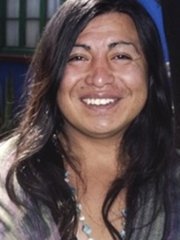
10. Diana Sacayán (1975 - 2015)
With an HPI of 39.84, Diana Sacayán is the 10th most famous Argentinean Social Activist. Their biography has been translated into 14 different languages.
Amancay Diana Sacayán (31 December 1975 – 11 October 2015) was an Argentinian LGBT and human rights activist who fought for the legal rights of travesti and transgender people in Argentina. She founded the Anti-Discrimination Movement of Liberation (MAL) and was part of the National Front for the Gender Identity Act in Argentina during public debate on Law 26,743 on Gender Identity. In June 2012, she became the first trans person to run for Ombudsman, running for La Matanza Partido. On 2 July 2012, she became the first Argentine trans person to receive a national identity card affirming her gender. It was handed to her by then-President Cristina Kirchner. Sacayán was murdered on 11 October 2015. On 18 June 2018, Oral Criminal Court 4 of Buenos Aires convicted one of her murderers, handing down a judgement that recognized, for the first time in the Argentine criminal justice system, the murder of a travesti as a hate crime involving gender identity. Provisions in Article 80, paragraph 4 of the Penal Code of Argentina were applied in reaching the decision. However, that aspect of the grisly murder was nullified in a decision by the National Chamber of Cassation in Criminal and Correctional Matters on 2 October 2020, though the sentence of life imprisonment was upheld.
People
Pantheon has 11 people classified as Argentinean social activists born between 1867 and 2001. Of these 11, 4 (36.36%) of them are still alive today. The most famous living Argentinean social activists include Adolfo Pérez Esquivel, Estela de Carlotto, and Susana Trimarco. The most famous deceased Argentinean social activists include Che Guevara, Virginia Bolten, and Azucena Villaflor. As of April 2024, 2 new Argentinean social activists have been added to Pantheon including Diana Sacayán, and Nicole Becker.
Living Argentinean Social Activists
Go to all RankingsAdolfo Pérez Esquivel
1931 - Present
HPI: 71.01
Estela de Carlotto
1930 - Present
HPI: 55.61
Susana Trimarco
1954 - Present
HPI: 48.13
Nicole Becker
2001 - Present
HPI: 34.09
Deceased Argentinean Social Activists
Go to all RankingsChe Guevara
1928 - 1967
HPI: 93.09
Virginia Bolten
1876 - 1960
HPI: 58.42
Azucena Villaflor
1924 - 1977
HPI: 58.40
Hebe de Bonafini
1928 - 2022
HPI: 54.58
Elvira Rawson de Dellepiane
1867 - 1954
HPI: 53.64
Maria Verónica Reina
1964 - 2017
HPI: 51.28
Diana Sacayán
1975 - 2015
HPI: 39.84
Newly Added Argentinean Social Activists (2025)
Go to all RankingsOverlapping Lives
Which Social Activists were alive at the same time? This visualization shows the lifespans of the 7 most globally memorable Social Activists since 1700.


